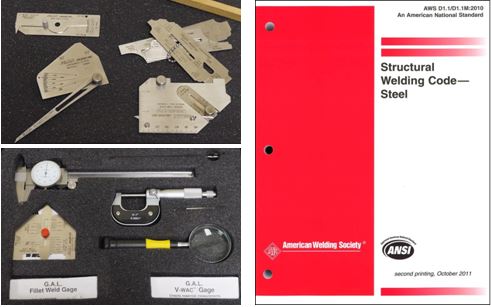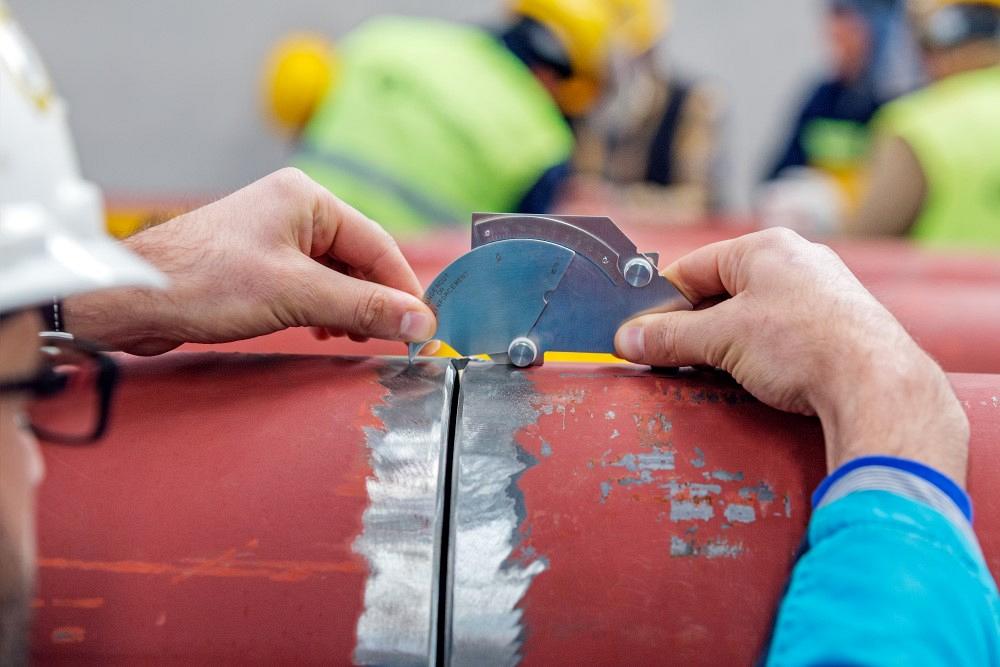Exploring the Relevance of Welding Examination in Industrial Applications: Securing Against Failures and Enhancing Long Life
Welding examination offers as an essential line of defense in industrial applications, making sure the architectural stability and integrity of welded components. By methodically identifying problems such as porosity and incomplete blend, assessments not just prevent failings yet additionally prolong the lifespan of important assets.
Duty of Welding Evaluation
Welding inspection offers as a critical protect in industrial applications, guaranteeing that welded structures satisfy specified requirements of top quality and safety and security. This procedure includes an organized assessment of welds to confirm their integrity, strength, and conformity with established codes and requirements. The role of welding examination is multifaceted, including both aesthetic assessments and non-destructive testing techniques, which might consist of ultrasonic, radiographic, or magnetic particle testing.

Additionally, welding inspection plays a crucial role in governing conformity. Inevitably, the role of welding examination is vital in advertising safety, enhancing performance, and securing financial investments in commercial infrastructure.
Usual Welding Issues

Among one of the most common flaws is porosity, defined by little gas pockets entraped within the weld steel. This takes place as a result of pollutants or incorrect protecting gas, compromising the weld's strength. An additional significant defect is insufficient blend, where the weld steel fails to bond effectively with the base product, potentially leading to architectural weaknesses.
Splits can likewise create during or after the welding process, commonly credited to thermal stresses or inappropriate air conditioning rates. Additionally, undercutting, where the base metal is deteriorated along the weld grain, can weaken the joint and is commonly brought on by excessive heat input or inaccurate method.
Additionally, absence of penetration happens when the weld steel does not get to the root of the joint, causing poor strength. Recognizing these usual problems is critical for examiners and welders alike to make sure that welded frameworks fulfill security and efficiency requirements, ultimately preventing possible failures in commercial applications.
Benefits of Routine Assessments
Normal assessments act as a crucial secure in making sure the integrity and durability of bonded frameworks. These assessments identify possible problems and weaknesses that might jeopardize the stability of welds, enabling prompt remediation before concerns rise. By applying an organized inspection routine, companies can substantially minimize the threat of disastrous failings that may lead to expensive downtime, equipment substitute, or perhaps crashes.
Moreover, routine inspections add to improved quality assurance throughout the welding procedure. By adhering to a consistent assessment routine, firms can make certain that their welding methods satisfy recognized top quality criteria and ideal techniques. This not just fosters a society of accountability yet likewise urges continuous improvement amongst welding personnel.
Additionally, routine assessments assist in better upkeep planning. By determining deterioration early, organizations can tactically arrange repair work and substitutes, lessening disturbance to procedures. This proactive strategy inevitably brings about extensive asset lifespan and enhanced overall performance.
Last but not least, a commitment to normal examinations can enhance a business's track record in the sector. Clients and stakeholders progressively value organizations that prioritize security and quality, thus enhancing trust and potentially resulting in enhanced organization chances.
Market Requirements and Rules
Adhering to sector standards and policies is an essential element of welding inspection that complements the advantages of regular examinations. These criteria, established by organizations such as the American go to these guys Welding Society (AWS) and the American Society of Mechanical Designers (ASME), provide a structure for ideal techniques in welding processes, products, and inspection techniques. Compliance with these guidelines makes sure that welds satisfy the needed high quality and security standards, significantly decreasing the danger of structural failings.
Regulative bodies like the Occupational Safety and Health Management (OSHA) even more enforce standards that shield employees and the setting throughout welding operations. By complying with these developed requirements, sectors can enhance the integrity of their elements and frameworks, ensuring they execute as intended under various functional problems.
Additionally, adherence to industry standards fosters uniformity in quality assurance, assisting in smoother interaction amongst stakeholders and governing firms. This alignment not only lessens liability threats yet also enhances the credibility of companies in affordable markets. Inevitably, compliance with welding requirements and laws is not merely a legal commitment; it is a crucial investment in safety, performance, and long-term operational success.
Future Trends in Welding Inspection
As industries remain to progress, the future of welding evaluation is positioned to integrate advanced technologies that improve precision and effectiveness. Among the most substantial trends is the fostering of automation and robotics in assessment procedures. Automated systems can carry out assessments rapidly, minimizing human mistake and increasing throughput in producing settings.
Furthermore, the assimilation of expert system use this link (AI) and artificial intelligence formulas will certainly make it possible for anticipating analytics, permitting real-time assessments and positive upkeep (Welding Inspection Gilbert Arizona). By analyzing data from previous inspections, these modern technologies can determine patterns that can show prospective failings, thereby prolonging the life-span of welded elements

Moreover, the trend towards digitalization will bring about improved data administration systems that help with better monitoring, reporting, and conformity with industry requirements. In recap, the future of welding assessment is identified by technological advancements that promise to significantly boost reliability, security, and operational performance in numerous industrial applications.
Conclusion
In final thought, welding assessment serves an important function in guaranteeing the stability and longevity of welded structures across different industrial applications. By identifying problems such as porosity and insufficient fusion, routine assessments play a substantial role in risk reduction and quality control. Adherence to sector standards and laws additionally enhances functional security and reliability. As improvements in innovation remain to advance, the future of welding assessment assures raised accuracy and effectiveness, inevitably contributing to the longevity of vital frameworks.
Welding assessment offers as a vital line of defense in commercial applications, ensuring the structural integrity and reliability of bonded parts.Welding evaluation serves as a critical secure in commercial applications, ensuring that welded frameworks fulfill specified standards of quality and safety - Welding Inspection Gilbert Arizona. you can look here Inevitably, the function of welding evaluation is important in promoting safety, improving performance, and securing financial investments in commercial framework
These requirements, developed by companies such as the American Welding Culture (AWS) and the American Society of Mechanical Designers (ASME), provide a framework for finest practices in welding procedures, products, and inspection techniques.In conclusion, welding evaluation serves a crucial feature in guaranteeing the honesty and longevity of bonded structures throughout different industrial applications.